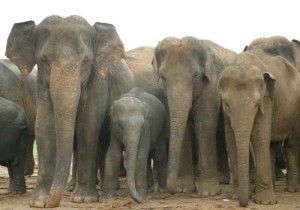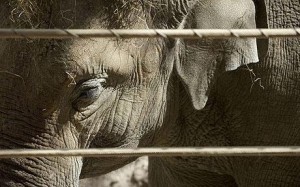Elephants in Captivity – Can They Save Them From Extinction
In 2011, the Elephant Conservation Center opened in Laos with the aim of supplementing the country’s ‘domesticated’ elephant population through a managed breeding programme.
It was necessary because, with only 450 domesticated elephants left in the country, they are becoming increasingly rare.
Many still work in the logging industry, but demand for their ‘services’ is dying out. And there is another problem: domesticated Asian elephants were traditionally replenished from the wild, but this is now banned.
Breeding from captive elephants is costly, however: gestation lasts two years and another two passes before the calf is weaned. For their riders, or mahouts, this can mean four years’ lost income. In Laos, 15 elephants die every year, but only 4 are born. Laos’ domesticated elephants could be gone in 40 years.
Elephants have been domesticated in South-East Asia for 4,000 years. In Laos, they were once as common as cows in Europe, but with increasing mechanization, their place in society is disappearing. Whether we should mourn this loss is a matter for debate.
![Elephants in Captivity]() DOMESTIC PAIN
DOMESTIC PAIN
For the People for the Ethical Treatment of Animals, it is no bad thing – the organisation believes that domestication is cruel. It starts when elephants are four years old and may involve beatings and depriving them of food and sleep until their independence is broken.
But the Asian elephant is much rarer than its African relative, with a population in the wild of some 35,000 animals. More significantly, this has fallen by 50 per cent over the past 60-75 years.
Some people believe that domesticated elephants could act as an ‘ark’ that guarantees the species’ survival. Unlike dogs or cows, Asian elephants have never been selectively bred, so they are genetically the same as their wild cousins.
Captive elephants can be reintroduced into the wild. Indeed, this already occurs – in Thailand, the Elephant Reintroduction Foundation manages three forest sanctuaries, into which 93 elephants have so far been released.
But elephant reintroductions are unlikely to contribute much to the conservation of the species, because the main problems it faces are shortage of habitat and conflict with humans. In much of Asia, wild elephants are regarded as pests and worse, because of crop-raiding, while in India alone at least 150 people die every year from encounters with elephants.
So if domesticated elephants aren’t going to be released back into the wild, what role can they play? They are still a huge tourist attraction, but is that a good reason to maintain this tradition?
At least half of the elephant camps in the region are “open prisons” that deny their ‘inmates’ proper food, shade and shelter.
 ElefantAsia is working with Lair to draw up a set of voluntary guidelines for camps and sanctuaries in South-East Asia, and it provides information on its website advising tourists what to look out for before making their choice of where to go.
ElefantAsia is working with Lair to draw up a set of voluntary guidelines for camps and sanctuaries in South-East Asia, and it provides information on its website advising tourists what to look out for before making their choice of where to go.
Both Lonely Planet and Rough Guides have recommendations for the best places to enjoy ‘ethical’ elephant rides, too. So for visitors to Asia for whom a holiday would not be complete without sitting on an elephant, the message is – carry on, just do your research first.
Asian elephants facts
The Asian elephant was probably first ‘domesticated’ about 4,000 years ago by the Harappan, or Indus Valley, culture in present-day Pakistan.
As well as being working animals, elephants have been used in war, in hunting as elevated platforms, as status symbols and in ceremonies.
Both the Buddhist and Hindu faiths revere the Asian elephant for its wisdom and strength -the ‘elephant god’, Ganesha, is widely worshipped. Elephants may have first been ’employed’ in Asia for religious purposes.
Outside of Thailand and Burma, indigenous people are the keepers of most of the remaining domesticated elephants.

